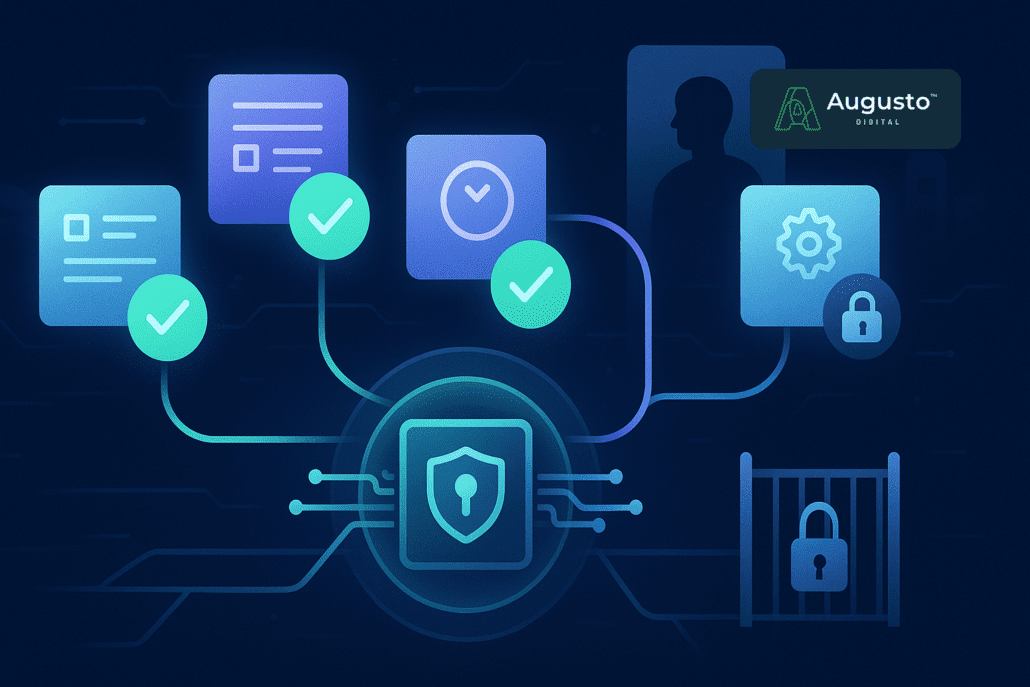Healthcare software engineers are tasked with building systems that are scalable, and efficient but also secure, compliant, and interoperable with complex infrastructures. From designing solutions for health information exchanges (HIEs) to enhancing health systems’ operations and creating cutting-edge health tech, engineers in this space face unique pressures: tight deadlines, intricate integrations, and ever-evolving regulatory requirements.
Low-code platforms are gaining traction as tools that enable faster development cycles without sacrificing quality. But how do they measure up against custom software development for the unique demands of healthcare? Let’s explore when—and how—low-code platforms might fit into your engineering toolkit.
What Is Low-Code?
Low-code platforms are environments that allow software development using drag-and-drop interfaces, prebuilt components, and APIs, reducing the amount of hand-coding needed. While these platforms are often marketed for non-developers, experienced engineers in healthcare can use them strategically to accelerate delivery for certain types of projects without compromising technical rigor or compliance.
What Makes Low-Code Relevant to Healthcare?
-
FHIR and HL7 Integrations: Many low-code platforms offer built-in connectors for common healthcare standards like FHIR or HL7, enabling quicker interoperability with EHRs and other systems.
-
Regulatory Compliance Features: Some platforms come with prebuilt modules for logging, audit trails, and encryption, addressing HIPAA and HITECH requirements out of the box.
-
Streamlined Prototyping: Engineers can rapidly create prototypes to validate ideas or meet tight deadlines for regulatory or operational changes.
What Are the Advantages of Low-Code for Experienced Engineers?
-
Accelerated Time-to-Market
Low-code enables faster iterations for projects like telehealth platforms, patient-facing apps, or internal workflow tools. This is especially helpful when responding to regulatory deadlines or public health emergencies. For example, building a patient engagement tool with scheduling and secure messaging capabilities in weeks instead of months. -
Efficient Integration with Legacy Systems
For health systems with decades-old architectures, low-code tools simplify integration with legacy applications, reducing the need for extensive middleware. -
Focus on High-Value Work
By automating repetitive development tasks, such as creating CRUD operations or integrating common APIs, engineers can focus on solving complex challenges like optimizing clinical workflows or scaling analytics platforms. -
Scalability and Interoperability
Enterprise-grade low-code platforms are designed to handle high volumes of healthcare data and support multi-system integration, ensuring they meet the scalability demands of HIEs or large health systems.
What Are the Limitations of Low-Code in Healthcare?
-
Restricted Customization
While low-code platforms excel in standard use cases, highly specialized applications—like AI-driven clinical decision support systems or advanced imaging solutions—often require custom software. -
Performance Concerns
Low-code platforms may struggle with high-performance requirements, particularly for real-time applications like continuous patient monitoring. -
Vendor Lock-In
Proprietary platforms can limit future scalability or integration options, especially if your organization’s needs outgrow the platform’s capabilities. -
Security and Compliance Gaps
Although many low-code platforms offer built-in compliance features, experienced engineers must validate these against their organization’s stringent standards.
When Should Healthcare Engineers Use Custom Software?
Custom development remains indispensable for projects requiring:
-
Advanced Analytics and AI: Tailored solutions for predictive modeling, genomic data analysis, or natural language processing of clinical notes.
-
Complex Integrations: Systems that need to seamlessly communicate across multiple proprietary technologies.
-
Optimized Performance: Applications with real-time data processing or high-throughput needs, such as patient monitoring or claims processing.
-
Deep Customization: Unique workflows, especially in highly specialized areas like oncology or cardiology research.
When Does Low-Code Shine in Healthcare?
-
Rapid Deployment of Standard Applications
Patient portals, scheduling systems, or simple workflow tools can be deployed faster using low code. For example, a health system rapidly deploys a vaccine scheduling tool integrated with its existing EHR.
-
Prototyping and Iteration
Use low-code for proof-of-concept builds to secure stakeholder buy-in before transitioning to a fully custom solution if needed.
-
Internal Tools and Automation
Automate repetitive processes like reporting, data entry workflows, or team collaboration tools.
-
Interoperability Gateways
Simplify the creation of integration layers for exchanging data between legacy systems and modern applications.
Practical Advice for Healthcare Engineers Exploring Low-Code
-
Choose Platforms with Healthcare Expertise
Prioritize platforms that explicitly support FHIR, HL7, or other industry standards to streamline integrations. For example, Mendix and OutSystems are known for offering healthcare-specific solutions.
-
Test for Scalability and Performance
Evaluate platforms under load, particularly for data-intensive or patient-facing applications, to ensure they can handle peak demand.
-
Use Modular Architectures
Combine low-code with custom development by designing modular systems. For instance, use low-code for frontend tools and custom APIs for backend complexity.
-
Plan for Vendor Lock-In
Select platforms with open standards and robust export options to future-proof your projects.
-
Validate Compliance
Conduct thorough testing of any built-in compliance features to ensure they meet your organization’s specific regulatory requirements.
Is Low-Code the Right Fit for Your Healthcare Projects?
In healthcare, low-code platforms are not a replacement for custom software but a complementary tool that can address specific challenges in healthcare development. There are instances where low-code is a good solution and times when it is not the appropriate solution. At Augusto, we can help you make that decision.
Whether you’re exploring low-code or need highly customized software, we help you determine the right tools to achieve the outcomes your organization needs.
Ready to innovate in healthcare development? Contact Augusto today to explore how our expertise can empower your team to deliver faster, smarter solutions.
Let's work together.
Partner with Augusto to streamline your digital operations, improve scalability, and enhance user experience. Whether you're facing infrastructure challenges or looking to elevate your digital strategy, our team is ready to help.
Schedule a Consult

